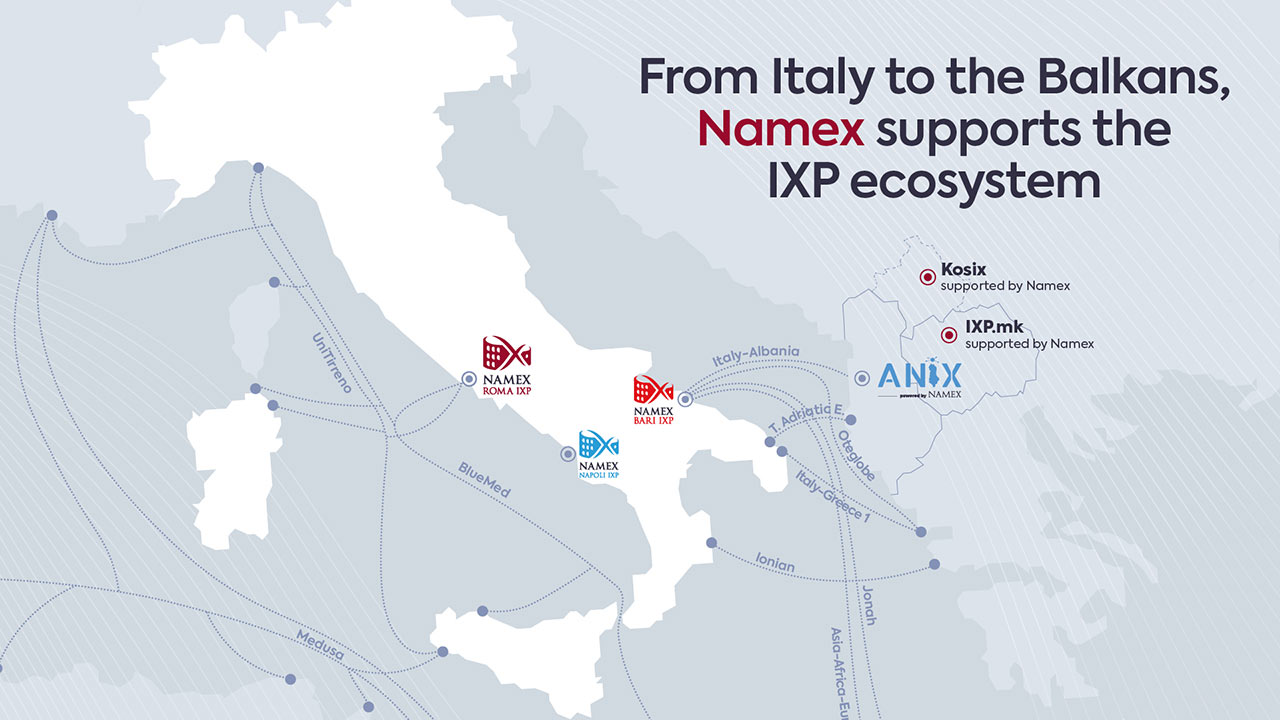The online streaming season has begun again — and, as every year, football matches are already generating significant traffic peaks on content transport and distribution networks. This autumn, Namex has once again substantially increased the capacity of its infrastructure to handle the growing traffic and ensure the best possible interconnection quality for providers, broadcasters, and major Content Delivery Networks connected to our IXPs.
But this is not just streaming season: it’s also the season of conferences and international exchanges.
Just back from the European Peering Forum, we witnessed firsthand how the regulatory dimension is becoming increasingly decisive for the future of networks.
Hypergiants — the major global players in Internet traffic — are optimizing and automating their presence at IXPs (now over 200 active interconnection points worldwide) to manage an increasingly distributed and critical network. And they’re doing so with growing attention to regulatory constraints, aware that even a single national regulation can impact their infrastructure choices.
Meanwhile, the Italian telecommunications market — and, consequently, the interconnection market — is undergoing a phase of profound transformation.
The new equilibrium taking shape following the sale of TIM’s network and the creation of FiberCop, together with the merger between Fastweb and Vodafone and the upcoming acquisition of Sparkle by Retelit, will significantly change the way traffic is exchanged between content providers and eyeball networks in our country.
These are developments that will also have a major impact on interconnection ecosystems and Internet Exchange Points, which are called upon to maintain neutrality, efficiency, and adaptability in a rapidly evolving scenario.
In parallel, the Italian Parliament is also addressing crucial issues for the digital future, such as the proposed legislation on datacenters, which aims to define procedures and criteria for building new strategic digital infrastructures.
This is a positive signal, but it will be essential that these regulations fit within a harmonized European framework, avoiding national approaches that could limit the ability to attract investment and innovate.
In this regard, the obligation introduced in Italy for OTTs to request authorization as telecommunications operators is drawing particular attention — a unique requirement in the European landscape.
A measure that, if not accompanied by EU-level coordination, risks penalizing our market and pushing major international investors to choose neighboring countries with less restrictive regulations.
In this context, Namex continues to strengthen its network of international collaborations, especially in the Mediterranean and the Balkans.
Following positive experiences with the IXPs in Albania (ANIX) and Kosovo (KOSIX), we are now adding a new collaboration agreement with the North Macedonia IXP, also developed on a pro-bono basis, with the goal of supporting the growth of local interconnection and contributing to the region’s digital development.
This represents a commitment consistent with Namex’s mission: promoting a more open, collaborative, and balanced Internet, fostering the emergence of new technical and peering communities in areas where infrastructure is still developing.
While everyone is looking ahead to the upcoming Digital Networks Act (DNA) expected by year-end, the challenge for Namex and the entire Italian IXP system is clear: continue to offer reliable and neutral interconnection services, support traffic growth, and promote a European Internet model that combines competitiveness, cooperation, and peering freedom.
— By Maurizio Goretti, Namex CEO


